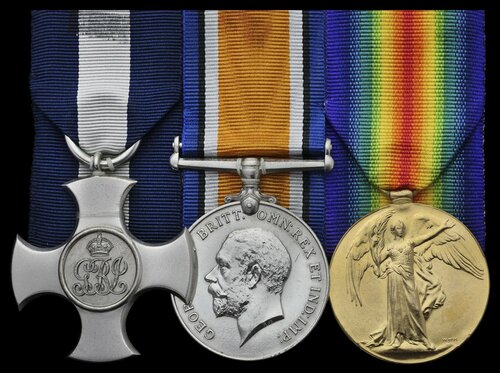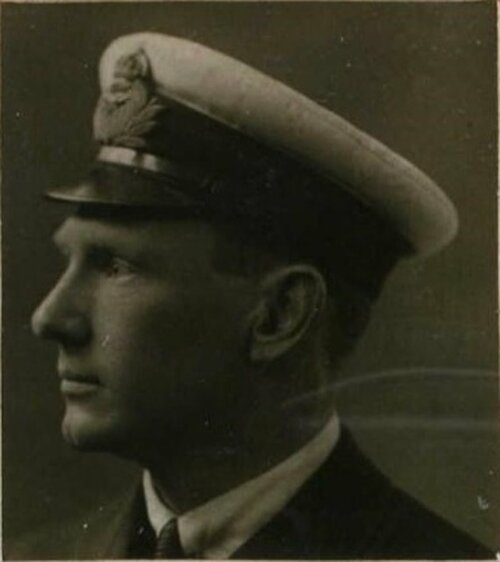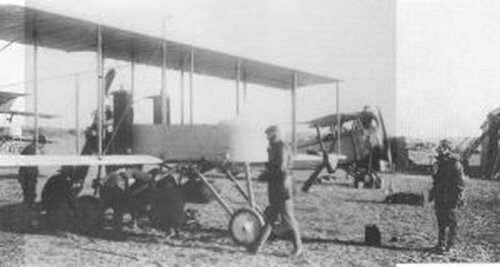Auction: 21002 - Orders, Decorations and Medals
Lot: 212
A rare 1917 D.S.C. group of three awarded to Captain C. A. Maitland-Heriot, Royal Air Force, late Royal Naval Air Service and Royal Naval Volunteer Reserve Armoured Car Section, decorated for his daring during a raid by No. 2 Squadron R.N.A.S. over the Kuleli Burgas Bridge in Bulgaria, only to be shot down a month later by Fighter Ace Emil Meinecke, being held Prisoner by the Ottomans
Distinguished Service Cross, G.V.R., hallmarks for London 1918, unnamed as issued; British War and Victory Medals (Capt. C. A. Maitland-Heriot. R.A.F.), mounted court-style as worn by Spink & Son, minor contact marks, very fine (3)
D.S.C. London Gazette 22 June 1917:
'In recognition of their services in a bombing attack on the Kuleli Burgas Bridge on the 4th January 1917, when several direct hits were scored and considerable damage done. The machines were exposed to anti-aircraft, rifle and machine gun fire during the attack, and also on the return journey.'
Charles Adrian Maitland-Heriot was born 8 August 1886 the son of F. M. Heriot and worked as a Civil Engineer prior to joining the Military. Commissioned Sub-Lieutenant with the Royal Naval Volunteer Reserve on 5 February 1915, serving with the Armoured Car Division (1915 Star). This formation grew out of a scouting and aircraft recovery formation maintained by the Royal Naval Volunteer Reserve which was outfitted with machine guns and armour in late 1914 for a more aggressive role. Trench warfare in France and Belgium prevented the use these vehicles and in mid-1915 they were transferred to the command of the Army. Maitland-Heriot left the 'Wavy Navy' on 21 June 1915, joining the Royal Naval Air Service on 22 June with the rank of Flight Lieutenant and his Royal Aero Club Certificate being issued on 31 July at Eastbourne. Detailed for the East Mediterranean he sailed on 13 October 1915, joining No. 2 Wing in the Aegean, his Wing Captain described him as:
'An excellent Pusher Pilot, + has good command of men.'
He was later recommended for promotion although this did not go through, this appears to have caused some bitterness on Maitland-Heriot's part as he was noted as 'complaining of being passed over for promotion'. No. 2 Wing flew from Imbros along with No. 3 Wing, originally focusing on reconnaissance and spotting before the absorption of No. 3 Wing led them to perform offensive roles as well. The aim of the RNAS in this area was firstly to support the Gallipoli front and later to support the Allied evacuation. With the loss at Gallipoli the British airmen were still not short of useful targets, from the Aegean Islands they were able to strike at both Turkish and Bulgarian Territory. The attack on the Kuleli Burgas Bridge on 4 January 1917 was conducted by three Henri Farman bombers, causing great damage to the span which was a valuable supply route between the Ottomans and their allies in Central Europe. Only a month later Maitland-Heriot found himself a Prisoner of War, being shot down by German Fighter Ace Emil Meinecke near Canakkale, Turkey on 12 February. Despite the situation he might have counted himself lucky, the original report stated that he had landed in Bulgarian territory and after his heroics the previous month he may have found a frostier welcome there. Notably at the time that he was shot down Maitland-Heriot was flying a Henri Farman, No. 3201, the same type of aircraft used in the attack on Kuleli Burgas the month before. Nevertheless he remained a Prisoner for some time, being promoted Captain while incarcerated on 1 April 1918 only being repatriated on 6 December 1918. He was demobilised on 19 May 1919; sold together with copied research including London Gazette and Air Force List entries.
Subject to 20% VAT on Buyer’s Premium. For more information please view Terms and Conditions for Buyers.
Sold for
£2,400
Starting price
£600









